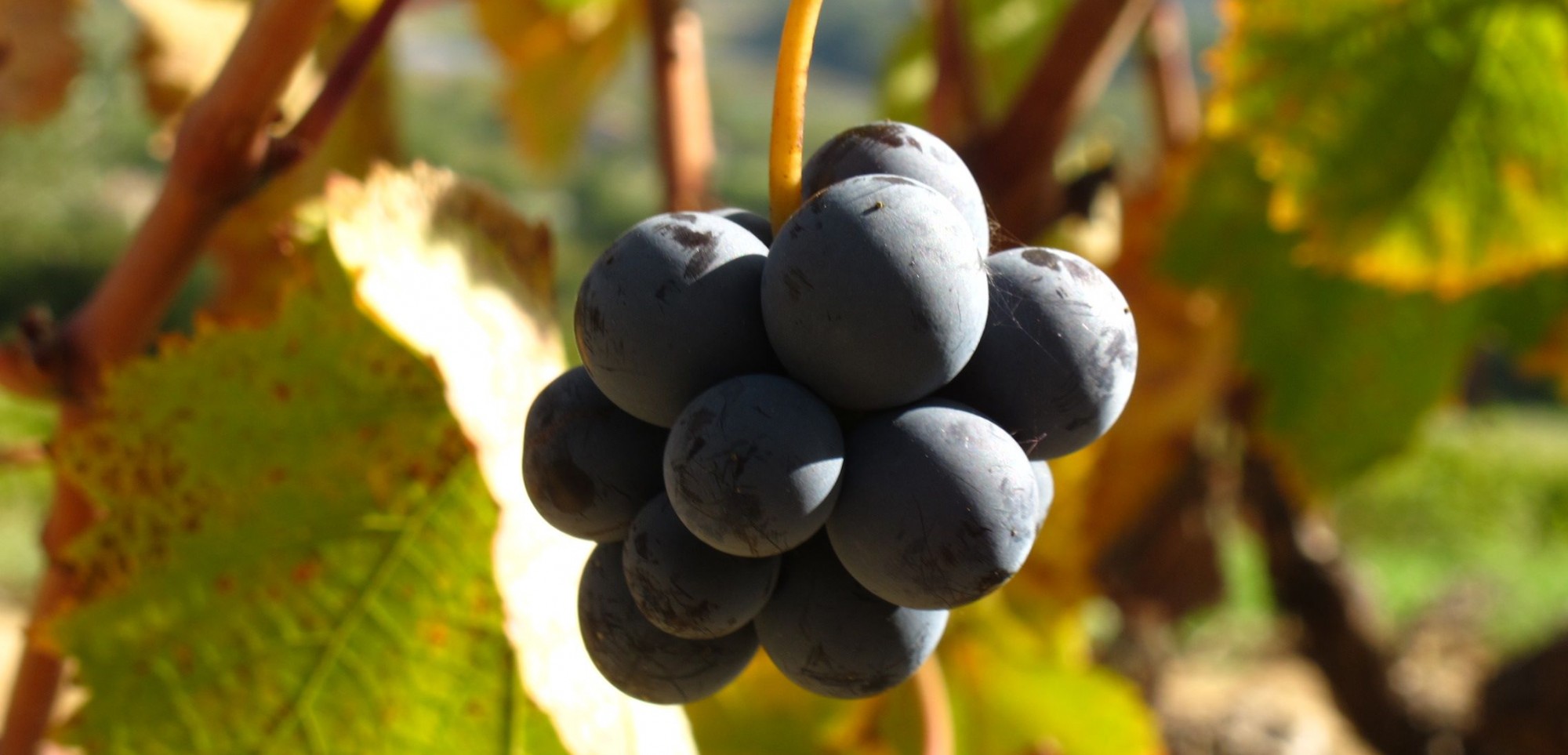Lamb Neck is the New Oxtail
Finally, the days of wine and hearty braises are over! As I scanned what was available to try for this week’s posting, my eyes alit on the Musella Valpolicella Trio. I’ve known Valpolicella to be a fantastic pairing partner for a variety of cheeses, but been recently disappointed by a lackluster, non-Lot18-purchased Valpolicella. The time was now to give this style another try and I chose the 2008 Musella Valpolicella Superiore Ripasso, a “baby Amarone,” for good measure.
This is an Amarone for people who don’t like Amarone. The weight is there from the wine being fermented on Amarone skins, a technique referred to as ripasso, but it was more like silk than the heavy drape that can plague certain Amarones. Along with the plush fruit quality on the palate, the wine also had a heat to it that called for a tender cut of meat. I didn’t
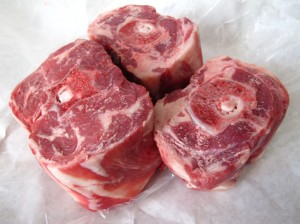
Lamb necks fresh from the butcher
want something with too much fat on it, though, so l decided to use this opportunity to call my local butcher, Fleisher’s Grass Fed and Organic Meats, to see if they had lamb neck. This was a cut I’d seen increasingly on menus, but never made myself. And whenever I said “lamb neck” to anyone but the butcher, everyone invariably responded, “What?” Clearly the two words are not often heard coupled, but this will change: Lamb neck is the new oxtail. The bones are bigger, and there are no satellite pieces of cartilage to maneuver a knife around and disturb the eating experience. Have your butcher cut the neck into manageable pieces; mine was a hair under three pounds so I had him cut it into three sections. Depending on the girth of your neck, there is usually more meat and even a spoon could cut through it, once it’s been sufficiently braised. Yes, it’s impossible to get away from this preparation with this cut, but I lightened it up by braising it in a garlic, onion and tomato broth for a few hours. This allowed for the gaminess of the lamb to sing and meld with the Valpolicella’s luscious fruit quality and long finish.
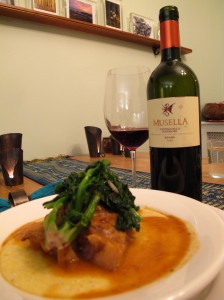
Lamb neck braised in tomato broth over taleggio polenta with wilted spinach, paired with the 2008 Musella Valpolicella Superiore Ripasso
Wanting to fully challenge the Valpolicella’s fresh berry and black plum notes with pungent earthy flavors, I served the lamb neck over creamy polenta with taleggio and topped the dish with spinach wilted with anchovies and carrot. The taleggio I used was rather young; next time I’d use a sharper hard cheese. The spinach, recently purchased from the farmers market, was wonderfully sweet, almost to the point of masking the anchovy. But this turned out to be a lovely counterpoint to the lamb and polenta. For any upcoming potlucks, this versatile wine is your go-to.
Lamb Neck in Tomato Broth
- 2.5-3 lb. lamb neck, cut crosswise into 3 sections
- 1 lb. tomatoes, chopped
- 1/2 red onion
- 3 cloves garlic, minced
- A pinch of cinnamon
- A pinch of freshly ground fennel
- A pinch of Hungarian paprika
Sprinkle salt and pepper on the neck pieces before browning them on all sides in a dutch oven. Remove the meat from dutch oven after 10-12 minutes of browning. Add onion and garlic and sweat them out in any gristle left in the pot; you may need to add a bit of olive oil to prevent sticking. Add the lamb neck back into the
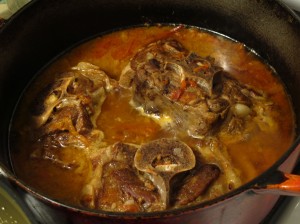
Braising necks
pot, the tomatoes, spices and a cup of water. Bring to a boil, then reduce to a low simmer. Simmer for 2-3 hours, flipping the meat every 45 mins-1 hr to ensure that the entire neck gets equal love by the broth. Immersion blend the broth and taste. Personally I liked the subtleness of the lamb and tomato together and didn’t add any additional salt and pepper. Serve over polenta.
Taleggio Polenta
- 8 c. water
- 2 c. polenta
- 1 tsp. salt
- 5-6 oz. taleggio, cut into pieces
Bring the water to a boil. Add polenta and stir, reduce heat to
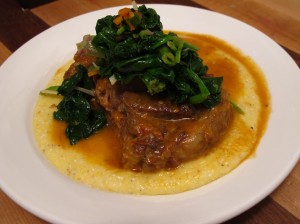
One foot in winter, one in spring: A lighter lamb braise with garden-fresh spinach
medium-low so it’s at a very low boil. Stir ever 5-7 minutes, adding a splash of milk each time after the initial 20 minutes. The polenta should be creamy after about 45 minutes. Turn the heat up, cover and boil for 3-5 minutes – the polenta will thicken considerably. Turn the heat back down to medium, add the taleggio with some fresh cracked black pepper and salt and melt the cheese in the polenta. For a different textural experience, you could also cut a thick piece of taleggio and float it in the polenta, and use a crème brûlée torch to melt the top slightly.
